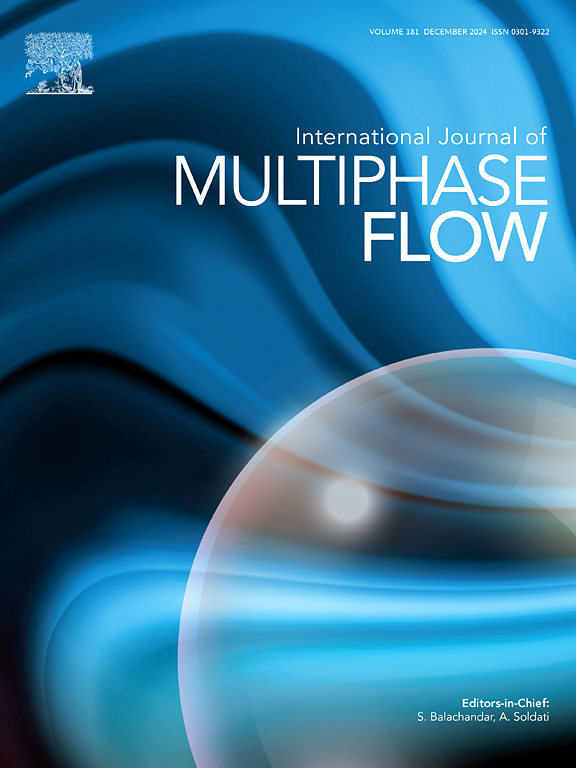A numerical investigation concerning wall-nucleation effects of the inception of sheet cavitation
IF 3.6
2区 工程技术
Q1 MECHANICS
International Journal of Multiphase Flow
Pub Date : 2025-01-25
DOI:10.1016/j.ijmultiphaseflow.2025.105142
引用次数: 0
Abstract
In this study, a multiscale Euler–Lagrange method is proposed, integrating a new wall nucleation model tailored for predicting sheet cavitation dynamics. Differentiating from the previous homogeneous wall nucleation model, our approach calculates nucleation diameter based on local flow conditions. Specifically, within the flow attachment region, the nucleation diameter is dependent on the flow shear rate, whereas in separation zones, it correlates with the thickness of the low-momentum region. Transition corrections are incorporated into the delayed detached eddy simulation (DDES) model to enhance accuracy in predicting flow separation. Rigorous validation is conducted, focusing on Lagrangian bubble dynamics and predicting laminar separation. The method is then applied to investigate cavitation flow induced by an axisymmetric headform body. Predicted cavitation scenarios are compared with experimental observations, Euler cavitation simulations, and multiscale simulations employing the wall nucleation model introduced by Hsiao et al., (2017). Results demonstrate that our model accurately predicts cavity morphology and inception index, closely matching experimental findings. Moreover, our model offers a coherent explanation for the detachment position and inception index of sheet cavitation, emphasizing the pivotal role of wall nucleation in precise prediction of sheet cavitation phenomena.
薄片空化开始时壁形核效应的数值研究
在这项研究中,提出了一个多尺度欧拉-拉格朗日方法,整合了一个新的壁形核模型,用于预测板的空化动力学。与以往的均匀壁成核模型不同,该方法基于局部流动条件计算成核直径。具体而言,在流动附着区,成核直径取决于流动剪切速率,而在分离区,成核直径与低动量区厚度有关。在延迟分离涡模拟(DDES)模型中加入过渡校正以提高预测流动分离的准确性。针对拉格朗日气泡动力学和层流分离预测进行了严格的验证。然后将该方法应用于轴对称头型体引起的空化流动研究。将预测的空化情景与实验观测、欧拉空化模拟以及采用Hsiao等人(2017)引入的壁面成核模型的多尺度模拟进行了比较。结果表明,该模型能准确预测空腔形态和初始指数,与实验结果吻合较好。此外,我们的模型对薄片空化的分离位置和起始指数提供了连贯的解释,强调了壁形核在精确预测薄片空化现象中的关键作用。
本文章由计算机程序翻译,如有差异,请以英文原文为准。
求助全文
约1分钟内获得全文
求助全文
来源期刊
CiteScore
7.30
自引率
10.50%
发文量
244
审稿时长
4 months
期刊介绍:
The International Journal of Multiphase Flow publishes analytical, numerical and experimental articles of lasting interest. The scope of the journal includes all aspects of mass, momentum and energy exchange phenomena among different phases such as occur in disperse flows, gas–liquid and liquid–liquid flows, flows in porous media, boiling, granular flows and others.
The journal publishes full papers, brief communications and conference announcements.

 求助内容:
求助内容: 应助结果提醒方式:
应助结果提醒方式:


